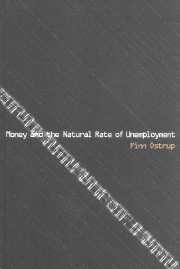Appendix: Microeconomic foundations
Published online by Cambridge University Press: 22 September 2009
Summary
Introduction
Below we will set out some of the most important assumptions regarding the economic structure which are used throughout the book. We take as the point of departure that production is determined by the interaction of decisions made by (i) representative firms which determine the capital stock and employment to maximise profit, (ii) households who determine consumption to optimise inter-temporal utility, (iii) authorities who have at their disposal monetary and/or fiscal policy, and (iv) wage setters who set the nominal wage with the view to reaching an optimal trade-off between the real wage and employment. The analysis considers a steady-state equilibrium, characterised by a constant output growth rate and constant levels of financial assets relative to nominal production. The model setting is an overlapping generations model with infinitely lived households. Most analyses concern an open economy.
The appendix is organised as follows. Section A.2 examines the firm's production decision, and section A.3 household optimisation with respect to the consumption of domestic and foreign goods and with respect to money holdings. Section A.4 considers the government, and section A.5 the foreign position. Section A.6 discusses the determination of domestic demand. Section A.7 examines goods market equilibrium. Section A.8 briefly surveys the short-term dynamics of the model. Section A.9 analyses the case where households are able to hold bank deposits which carry an interest rate. Section A.10 considers the securities market. Section A.11 gives a summary and conclusion.
- Type
- Chapter
- Information
- Money and the Natural Rate of Unemployment , pp. 260 - 284Publisher: Cambridge University PressPrint publication year: 2000



